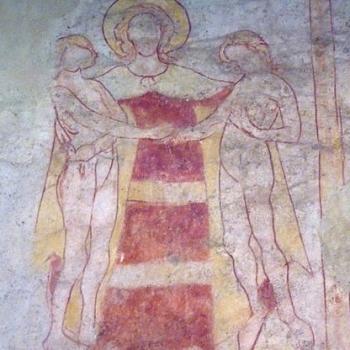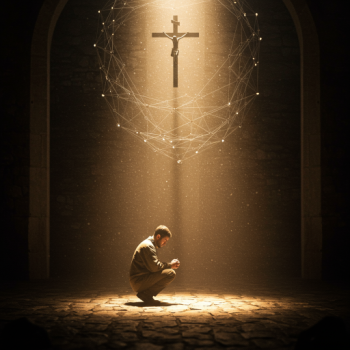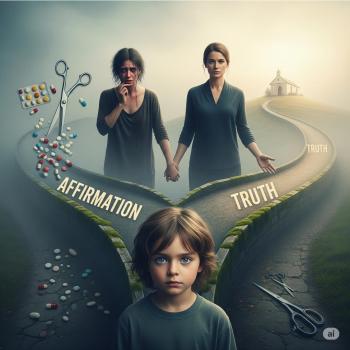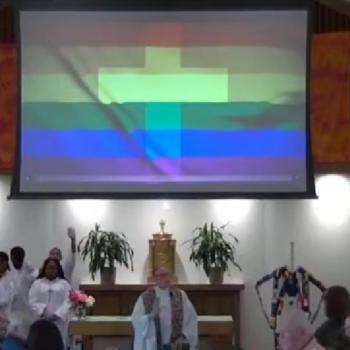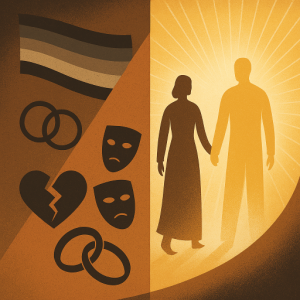
I recently came across an article by fellow Patheos blogger Talley Cross on the Evangelical Channel, titled Yes, There Is Sex in the Resurrection. In it, Cross claims that the resurrected will experience some form of sexual activity with one another. She appeals to Scripture, especially to what it reveals about the nature of resurrected bodies, particularly Jesus’ glorified body. She writes:
Our bodies were designed for sex the way our stomachs were designed for food. Denying the existence of sex in the resurrection is tantamount to denying the reality of the resurrected body.
At first glance, her appeal to Jesus eating after the resurrection does not offer compelling evidence that the resurrected will engage in sexual activity. Still, the notion of sex in the resurrection raises important anthropological questions worth exploring.
My aim in this article is to present the Catholic understanding of resurrected human identity—an identity that affirms the body and purifies its meaning. This perspective also offers a clear answer to secular categories like “gay” and “transgender.”
In short: no, the resurrected do not engage in sexual activity. But they do retain their biological sex, glorified in Christ.
What the Catholic Church Teaches
Let us begin with what the Church teaches about the nature of the body in the Resurrection to Life. In the synoptic Gospels (Matthew, Mark, and Luke), Jesus clearly teaches that marriage ends in the resurrection. Since sexual union belongs to marriage, it too ceases. Marriage and sex are realities of this age, not of the age to come.
For in the resurrection they neither marry nor are given in marriage, but are like angels in heaven. (Matthew 22:30; Mark 12:25; Luke 20:34–36)
St. John Paul II reaffirms this in his Theology of the Body:
As can be seen from these words, marriage—that union in which, according to Genesis, ‘A man cleaves to his wife, and they become one flesh’ (2:24)—belongs exclusively to this age. Marriage and procreation do not constitute, on the other hand, the eschatological future of man.
However, the end of sexual union does not imply the end of maleness and femaleness. Again, from St. John Paul II:
The words Christ spoke about the resurrection enable us to deduce that the dimension of masculinity and femininity—that is, being male and female in the body—will again be constituted together with the resurrection of the body in ‘that age.’
The Church clearly teaches that in the resurrection, the faithful retain their biological sex (now glorified in the age to come) but they no longer engage in the sexual activity proper to this earthly life.
The Key Error in Cross’s Article
One of the article’s fundamental errors is its false equivalence between bodily sex (male/female) and sexual activity. For example, Cross writes:
I think having perfectly functioning sexual bodies in the resurrection, with eternal abstinence, could possibly be more hellish than having a blank space where my sex organs should be.
Thankfully the resurrection will entail neither of these distortions. An all-encompassing paradise awaits us: a worship paradise, a botanical paradise, a musical paradise, a culinary paradise, and yes, a sexual paradise.
This reasoning confuses eternal identity with earthly expressions of intimacy. The author implies that eternal abstinence would be torturous—thereby affirming the modern view that erotic fulfillment is essential to human flourishing. Her logic suggests that bodily desire and erotic love are ultimate goods, which the resurrection must validate.
In contrast, the Catholic view sees all earthly goods (including sexuality) as signs pointing beyond themselves. In heaven, these signs are fulfilled and transcended.
The Resurrection Settles the Gender Identity Debate
The Catholic theology of the resurrection also addresses the current cultural confusion surrounding LGBTQ and gender identity issues.
The Church teaches:
- God created human beings as a unity of body and soul, male and female (Genesis 1:27).
- In the resurrection, glorified bodies maintain this created reality—there is no confusion, mutilation, or disordered desire.
- The resurrected are united not by sexual attraction or gender identification but by shared communion with God through Christ.
- In heaven, all other identities fall away. We will be known simply and fully as sons and daughters of God, members of Christ’s mystical Body.
This contrasts sharply with modern categories that:
- Reduce the person to patterns of desire or felt identity.
- Deny the unity of body and soul (as in transgender ideology).
- Treat “gay” or “transgender” as essential, rather than fallen, categories.
As the Catechism of the Catholic Church teaches:
2333 Everyone, man and woman, should acknowledge and accept his sexual identity. Physical, moral, and spiritual difference and complementarity are oriented toward the goods of marriage and the flourishing of family life. The harmony of the couple and of society depends in part on the way in which the complementarity, needs, and mutual support between the sexes are lived out.
In the Resurrection, all confusion will be healed. As St. Paul writes in 1 Corinthians 13:12:
For now we see in a mirror dimly, but then face to face. Now I know in part; then I shall know fully, even as I have been fully known.
Heaven brings not only freedom from pain and death, but also from deception, confusion, and false self-concepts. In the resurrection, we are “fully known” for who we truly are. Clarity replaces confusion, and truth heals illusion.
Final Thoughts
I thank Talley Cross for raising an often neglected (but deeply interesting) topic. Her article invites important reflection. Yet her core error lies in looking backward to Eden as a model for heavenly life. But the resurrection is not a return to the Garden; it is the fulfillment of everything Eden foreshadowed.
In the Resurrection, perfect union and communion will exist between the Bride (the Church) and the Bridegroom (Christ). The intimacy we long for will be fully realized—not through sex, but through divine love that infinitely surpasses any earthly pleasure.
In Christ, we receive not only forgiveness, but the promise of becoming fully ourselves: male or female, whole and holy, forever.
Thank you!
If you liked this article, please leave your comments below. I am very interested in your opinion on this topic.
Read The Latin Right’s other writing here.
Please visit my Facebook page and IM your questions (and follow my page) or topics for articles you would like covered.



